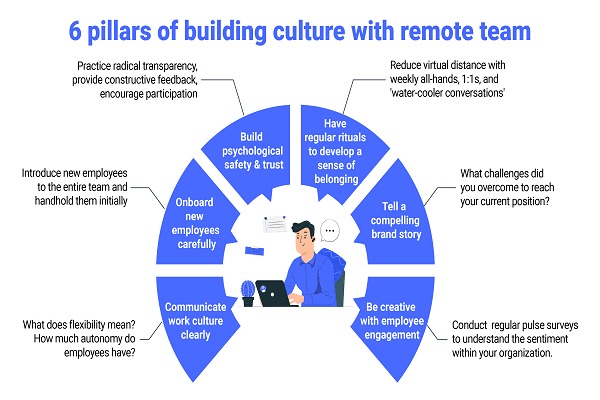 News
News
You can have the best processes, the most advanced tech stack, and a clearly mapped-out product roadmap, but if your development team isn’t aligned with how your company thinks and communicates, things get messy fast. That’s why more companies are doubling down on nearshore development teams. Not just for the time zones or talent, though those are huge perks, but for the cultural fit. It’s the unspoken advantage that keeps feedback loops clean, decisions fast, and the team moving in sync.
Do Cultural Similarities Matter In Nearshore Teams?
Cultural similarities might sound like a soft factor, but in nearshore development, they can quietly make or break a team’s efficiency. When your developers share a similar work culture, communication style, and even sense of humor, everything from feedback loops to brainstorming sessions feels more natural and aligned. You’re not constantly translating intent or dealing with awkward misunderstandings, which, let’s face it, can cost time and money. Teams with cultural alignment tend to resolve issues faster, collaborate more smoothly, and stay on the same page with your business goals. So yes, cultural similarities do matter, not because they’re nice to have, but because they help avoid friction and build the kind of trust that keeps your nearshore development team moving forward without unnecessary drama.
Cultural Differences Can Cause Mishaps and Negatively Affect Nearshore Development Teams Success Factors
One may consider that cultural differences in a team of remote developers may not actually matter much but the below potential mishaps highlight just how bad the consequences can be!
1. Feedback is misinterpreted.
What you think is a simple suggestion might come off as offensive, especially if your tone or phrasing clashes with how the other team is used to communicating.
2. Deadlines lose meaning.
In some cultures, deadlines are firm. In others, they’re flexible. If you’re not aligned, you might find yourself waiting for work that was never going to arrive on time.
3. Meetings become awkward or unproductive.
If one team is used to direct, fast-paced calls and the other prefers slow consensus-building, you’ll spend more time translating tone than solving problems.
4. Decision-making takes forever.
Some nearshore development teams won’t take initiative unless told explicitly, while others expect autonomy. Without shared expectations, progress stalls and leadership gets frustrated.
5. Team bonding falls flat.
Casual chats or virtual social events might feel forced or even uncomfortable if there’s no common cultural ground. And that impacts trust and overall team chemistry.
6. Clients start noticing gaps.
If your internal communication is off, it starts to leak into deliverables. Inconsistencies in tone, documentation, or priorities can eventually impact your brand or client relationships.
7. Humor and sarcasm backfire.
What’s meant to lighten the mood can easily offend or confuse someone from a different culture. A casual joke might lead to silent tension you didn’t see coming.
8. Onboarding becomes a struggle.
When there’s no shared cultural baseline, even basic onboarding processes can feel disjointed. New hires might misunderstand policies, communication norms, or even project priorities.
9. Trust takes longer to build.
Without cultural alignment, people tend to stay cautious. They over-explain or under-share, double-check too much, or hold back ideas, which slows down collaboration and innovation in your nearshore development team.
Ways In Which Cultural Similarities Make Nearshore Development Teams More Effective
The below section discusses some nearshore development cultural advantages and how they make remote teams more productive!
Shared Decision-Making Styles Boost Efficiency 》
Different cultures handle decision-making differently, some prefer hierarchy, while others value consensus. When you and your nearshore team come from similar cultural backgrounds, the decision-making process doesn’t become a bottleneck. You won’t waste time wondering if silence means agreement or disagreement, or whether you should have run something up a longer approval chain. Everyone is already used to the same rhythm of when to act, when to pause, and when to escalate, so things just move faster and with less second-guessing.
Humor and Informality Build Stronger Bonds 》
Team bonding isn’t just about virtual happy hours. It’s also about how people interact day to day. When nearshore developers share your sense of humor or informal communication style, rapport builds more naturally. You’ll notice more open Slack banter, more casual idea sharing, and less hesitation to speak up during meetings. It’s not just “nice to have”, that ease directly impacts how openly people collaborate, give feedback, and step up during tough project phases.
Less Cognitive Load During Collaboration 》
Every time you work across cultures, your brain does a little extra work, filtering what you say, softening your tone, adjusting for interpretation. That adds up. But when you’re working with culturally aligned nearshore teams, you don’t need to overthink every sentence. Meetings stay focused on the problem at hand, not on decoding someone’s tone or worrying whether your feedback landed the wrong way. That mental space matters, it keeps everyone sharper and more productive.
Client Expectations Are Better Understood 》
Nearshore teams that are culturally close to your company often have a more intuitive understanding of what your end clients want. Whether it’s clean UX, fast delivery, or flexibility on short notice, they’re likely already wired to deliver it without being explicitly told. That means less need to over-document user expectations and fewer surprises when the final product lands. It’s like working with a team that just “gets” your audience.
Easier Adoption of Company Culture and Tools 》
Let’s be real, no one wants to spend weeks onboarding a development partner into your processes, only to realize they aren’t used to that level of transparency or speed. Nearshore teams who already share your cultural mindset adapt to your tools, workflows, and internal culture much more quickly. Whether it’s how you use Jira or how your team handles agile standups, the learning curve is much shorter, and that’s a big win for momentum.
More Room for Innovation (Not Just Execution) 》
Culturally similar teams are more likely to go beyond the brief. They feel comfortable suggesting changes, offering product improvements, and thinking like stakeholders. That only happens when developers aren’t afraid of overstepping because they intuitively understand what would be appreciated versus what would feel pushy. It’s not just about doing the job, it’s about being part of the product’s growth. And that kind of proactive contribution often comes more easily with cultural alignment.
Feedback Is Taken the Way It’s Meant 》
Even when the intentions are good, feedback can land wrong if there’s a cultural mismatch. In some cultures, direct feedback is normal, expected, even. In others, it can come off as rude or discouraging. With nearshore teams that share a similar feedback culture, there's no need to sugarcoat or over-explain. You can be clear, honest, and constructive without the fear of being misunderstood. This speeds up iteration cycles and creates a culture of trust, because people know that feedback is just part of improving, not a personal attack.
Time Zone Proximity Plus Cultural Proximity = Real-Time Results 》
Working in similar time zones is already a win. But when you layer in cultural similarities, real-time collaboration becomes actually productive. You're not just online at the same time, you’re thinking in the same frameworks. There's no hesitation to jump on a quick call, hash something out, or pivot mid-day because the cultural norms around urgency and ownership match. That combo creates a flow that’s hard to replicate with offshore teams in totally different working cultures, even if the clocks align.
Shared Work Ethic Aligns Delivery Expectations 》
How fast is “fast”? What’s considered “going the extra mile”? These things aren’t universal, but when you and your nearshore team are on the same page culturally, your sense of urgency and dedication tends to match. You won’t be constantly nudging developers to meet deadlines or double-checking if they understood the project’s priorities. The built-in alignment around hustle, pride in output, and responsiveness makes the delivery process smoother, with fewer follow-ups and misaligned expectations.
Consider Blue Coding For Nearshoring!
At Blue Coding, we’ve seen firsthand how cultural alignment can elevate nearshore development from “good enough” to genuinely great. Working with nearahore teams means working in the same time zone, thinking the same way, solving problems with the same urgency, and communicating without having to over-explain every step. That’s why we prioritize cultural fit just as much as technical expertise when building our teams. If you're looking for a nearshore development partner who gets your business and works like an extension of your team, let’s talk. Contact us today to find out how we can help on a free strategy call!




